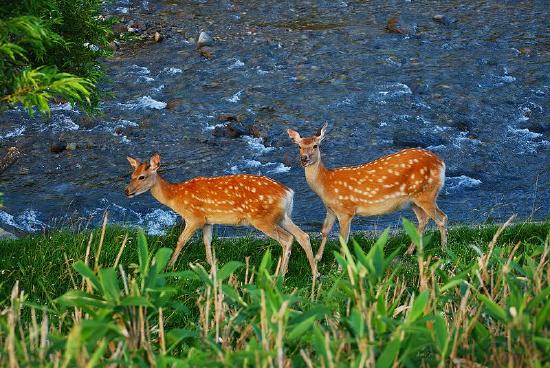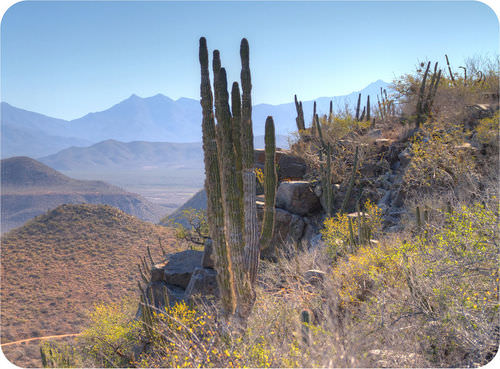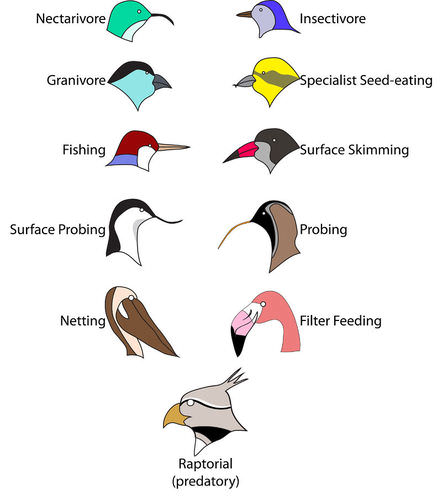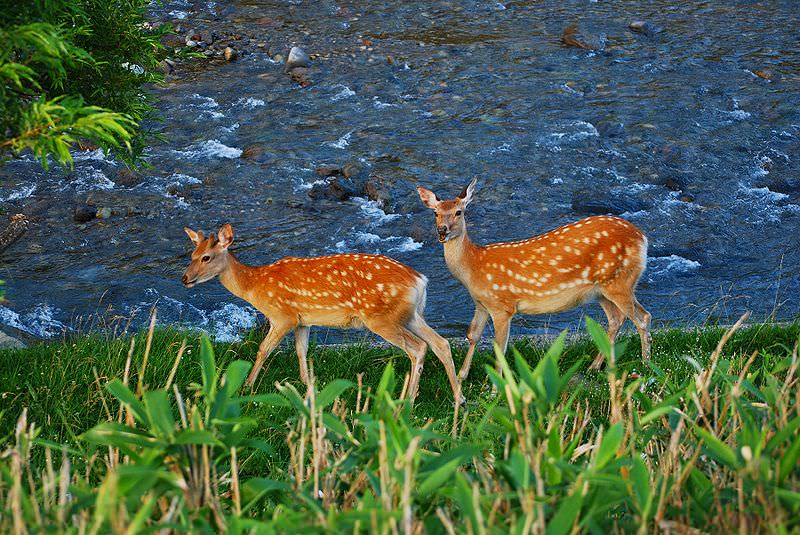6.11: Ecosystems
- Page ID
- 1489
\( \newcommand{\vecs}[1]{\overset { \scriptstyle \rightharpoonup} {\mathbf{#1}} } \)
\( \newcommand{\vecd}[1]{\overset{-\!-\!\rightharpoonup}{\vphantom{a}\smash {#1}}} \)
\( \newcommand{\dsum}{\displaystyle\sum\limits} \)
\( \newcommand{\dint}{\displaystyle\int\limits} \)
\( \newcommand{\dlim}{\displaystyle\lim\limits} \)
\( \newcommand{\id}{\mathrm{id}}\) \( \newcommand{\Span}{\mathrm{span}}\)
( \newcommand{\kernel}{\mathrm{null}\,}\) \( \newcommand{\range}{\mathrm{range}\,}\)
\( \newcommand{\RealPart}{\mathrm{Re}}\) \( \newcommand{\ImaginaryPart}{\mathrm{Im}}\)
\( \newcommand{\Argument}{\mathrm{Arg}}\) \( \newcommand{\norm}[1]{\| #1 \|}\)
\( \newcommand{\inner}[2]{\langle #1, #2 \rangle}\)
\( \newcommand{\Span}{\mathrm{span}}\)
\( \newcommand{\id}{\mathrm{id}}\)
\( \newcommand{\Span}{\mathrm{span}}\)
\( \newcommand{\kernel}{\mathrm{null}\,}\)
\( \newcommand{\range}{\mathrm{range}\,}\)
\( \newcommand{\RealPart}{\mathrm{Re}}\)
\( \newcommand{\ImaginaryPart}{\mathrm{Im}}\)
\( \newcommand{\Argument}{\mathrm{Arg}}\)
\( \newcommand{\norm}[1]{\| #1 \|}\)
\( \newcommand{\inner}[2]{\langle #1, #2 \rangle}\)
\( \newcommand{\Span}{\mathrm{span}}\) \( \newcommand{\AA}{\unicode[.8,0]{x212B}}\)
\( \newcommand{\vectorA}[1]{\vec{#1}} % arrow\)
\( \newcommand{\vectorAt}[1]{\vec{\text{#1}}} % arrow\)
\( \newcommand{\vectorB}[1]{\overset { \scriptstyle \rightharpoonup} {\mathbf{#1}} } \)
\( \newcommand{\vectorC}[1]{\textbf{#1}} \)
\( \newcommand{\vectorD}[1]{\overrightarrow{#1}} \)
\( \newcommand{\vectorDt}[1]{\overrightarrow{\text{#1}}} \)
\( \newcommand{\vectE}[1]{\overset{-\!-\!\rightharpoonup}{\vphantom{a}\smash{\mathbf {#1}}}} \)
\( \newcommand{\vecs}[1]{\overset { \scriptstyle \rightharpoonup} {\mathbf{#1}} } \)
\( \newcommand{\vecd}[1]{\overset{-\!-\!\rightharpoonup}{\vphantom{a}\smash {#1}}} \)
\(\newcommand{\avec}{\mathbf a}\) \(\newcommand{\bvec}{\mathbf b}\) \(\newcommand{\cvec}{\mathbf c}\) \(\newcommand{\dvec}{\mathbf d}\) \(\newcommand{\dtil}{\widetilde{\mathbf d}}\) \(\newcommand{\evec}{\mathbf e}\) \(\newcommand{\fvec}{\mathbf f}\) \(\newcommand{\nvec}{\mathbf n}\) \(\newcommand{\pvec}{\mathbf p}\) \(\newcommand{\qvec}{\mathbf q}\) \(\newcommand{\svec}{\mathbf s}\) \(\newcommand{\tvec}{\mathbf t}\) \(\newcommand{\uvec}{\mathbf u}\) \(\newcommand{\vvec}{\mathbf v}\) \(\newcommand{\wvec}{\mathbf w}\) \(\newcommand{\xvec}{\mathbf x}\) \(\newcommand{\yvec}{\mathbf y}\) \(\newcommand{\zvec}{\mathbf z}\) \(\newcommand{\rvec}{\mathbf r}\) \(\newcommand{\mvec}{\mathbf m}\) \(\newcommand{\zerovec}{\mathbf 0}\) \(\newcommand{\onevec}{\mathbf 1}\) \(\newcommand{\real}{\mathbb R}\) \(\newcommand{\twovec}[2]{\left[\begin{array}{r}#1 \\ #2 \end{array}\right]}\) \(\newcommand{\ctwovec}[2]{\left[\begin{array}{c}#1 \\ #2 \end{array}\right]}\) \(\newcommand{\threevec}[3]{\left[\begin{array}{r}#1 \\ #2 \\ #3 \end{array}\right]}\) \(\newcommand{\cthreevec}[3]{\left[\begin{array}{c}#1 \\ #2 \\ #3 \end{array}\right]}\) \(\newcommand{\fourvec}[4]{\left[\begin{array}{r}#1 \\ #2 \\ #3 \\ #4 \end{array}\right]}\) \(\newcommand{\cfourvec}[4]{\left[\begin{array}{c}#1 \\ #2 \\ #3 \\ #4 \end{array}\right]}\) \(\newcommand{\fivevec}[5]{\left[\begin{array}{r}#1 \\ #2 \\ #3 \\ #4 \\ #5 \\ \end{array}\right]}\) \(\newcommand{\cfivevec}[5]{\left[\begin{array}{c}#1 \\ #2 \\ #3 \\ #4 \\ #5 \\ \end{array}\right]}\) \(\newcommand{\mattwo}[4]{\left[\begin{array}{rr}#1 \amp #2 \\ #3 \amp #4 \\ \end{array}\right]}\) \(\newcommand{\laspan}[1]{\text{Span}\{#1\}}\) \(\newcommand{\bcal}{\cal B}\) \(\newcommand{\ccal}{\cal C}\) \(\newcommand{\scal}{\cal S}\) \(\newcommand{\wcal}{\cal W}\) \(\newcommand{\ecal}{\cal E}\) \(\newcommand{\coords}[2]{\left\{#1\right\}_{#2}}\) \(\newcommand{\gray}[1]{\color{gray}{#1}}\) \(\newcommand{\lgray}[1]{\color{lightgray}{#1}}\) \(\newcommand{\rank}{\operatorname{rank}}\) \(\newcommand{\row}{\text{Row}}\) \(\newcommand{\col}{\text{Col}}\) \(\renewcommand{\row}{\text{Row}}\) \(\newcommand{\nul}{\text{Nul}}\) \(\newcommand{\var}{\text{Var}}\) \(\newcommand{\corr}{\text{corr}}\) \(\newcommand{\len}[1]{\left|#1\right|}\) \(\newcommand{\bbar}{\overline{\bvec}}\) \(\newcommand{\bhat}{\widehat{\bvec}}\) \(\newcommand{\bperp}{\bvec^\perp}\) \(\newcommand{\xhat}{\widehat{\xvec}}\) \(\newcommand{\vhat}{\widehat{\vvec}}\) \(\newcommand{\uhat}{\widehat{\uvec}}\) \(\newcommand{\what}{\widehat{\wvec}}\) \(\newcommand{\Sighat}{\widehat{\Sigma}}\) \(\newcommand{\lt}{<}\) \(\newcommand{\gt}{>}\) \(\newcommand{\amp}{&}\) \(\definecolor{fillinmathshade}{gray}{0.9}\)
What lives in the forest?
Take a close look at this ecosystem. Obviously there are deer and many types of plants. But there are organisms that live there that cannot be seen in the picture. Many other animals, such as rabbits, mice, and countless insects. There are also bacteria and fungi. Add in the nonliving aspects of the area, such as the water, and you have an ecosystem.
The Ecosystem
Ecology is the study of how living things interact with each other and with their environment. It is a major branch of biology, but has areas of overlap with geography, geology, climatology, and other sciences. The study of ecology begins with two fundamental concepts in ecology: the ecosystem and their organisms.
Organisms are individual living things. Despite their tremendous diversity, all organisms have the same basic needs: energy and matter. These must be obtained from the environment. Therefore, organisms are not closed systems. They depend on and are influenced by their environment. The environment includes two types of factors: abiotic and biotic.
- Abiotic factors are the nonliving aspects of the environment. They include factors such as sunlight, soil, temperature, and water.
- Biotic factors are the living aspects of the environment. They consist of other organisms, including members of the same and different species.
An ecosystem is a unit of nature and the focus of study in ecology. It consists of all the biotic and abiotic factors in an area and their interactions. Ecosystems can vary in size. A lake could be considered an ecosystem. So could a dead log on a forest floor. Both the lake and log contain a variety of species that interact with each other and with abiotic factors. Another example of an ecosystem is pictured in Figure below.
 A desert ecosystem. What are some of the biotic and abiotic factors in this desert ecosystem?
A desert ecosystem. What are some of the biotic and abiotic factors in this desert ecosystem?When it comes to energy, ecosystems are not closed. They need constant inputs of energy. Most ecosystems get energy from sunlight. A small minority get energy from chemical compounds. Unlike energy, matter is not constantly added to ecosystems. Instead, it is recycled. Water and elements such as carbon and nitrogen are used over and over again.
Niche
One of the most important concepts associated with the ecosystem is the niche. A niche refers to the role of a species in its ecosystem. It includes all the ways that the species interacts with the biotic and abiotic factors of the environment. Two important aspects of a species’ niche are the food it eats and how the food is obtained. Look at Figure below. It shows pictures of birds that occupy different niches. Each species eats a different type of food and obtains the food in a different way.
 Bird Niches. Each of these species of birds has a beak that suits it for its niche. For example, the long slender beak of the nectarivore allows it to sip liquid nectar from flowers. The short sturdy beak of the granivore allows it to crush hard, tough grains.
Bird Niches. Each of these species of birds has a beak that suits it for its niche. For example, the long slender beak of the nectarivore allows it to sip liquid nectar from flowers. The short sturdy beak of the granivore allows it to crush hard, tough grains.Habitat
Another aspect of a species’ niche is its habitat. The habitat is the physical environment in which a species lives and to which it is adapted. A habitat’s features are determined mainly by abiotic factors such as temperature and rainfall. These factors also influence the traits of the organisms that live there.
Competitive Exclusion Principle
A given habitat may contain many different species, but each species must have a different niche. Two different species cannot occupy the same niche in the same place for very long. This is known as the competitive exclusion principle. If two species were to occupy the same niche, what do you think would happen? They would compete with one another for the same food and other resources in the environment. Eventually, one species would be likely to outcompete and replace the other.
Summary
- Ecology is the study of how living things interact with each other and with their environment.
- The environment includes abiotic (nonliving) and biotic (living) factors.
- An ecosystem consists of all the biotic and abiotic factors in an area and their interactions.
- A niche refers to the role of a species in its ecosystem.
- A habitat is the physical environment in which a species lives and to which it is adapted.
- Two different species cannot occupy the same niche in the same place for very long.
Review
- Define ecology.
- Define biotic and abiotic factors of the environment. Give an example of each.
- How do ecologists define the term ecosystem? What makes up an ecosystem?
- State the competitive exclusion principle.
- Compare and contrast the ecosystem concepts of niche and habitat.
| Image | Reference | Attributions |
 |
[Figure 1] | Credit: Amy Goldstein;Jodi So Source: http://www.flickr.com/photos/amylovesyah/3945525048/ ; CK-12 Foundation License: CC BY-NC 3.0 |
 |
[Figure 2] | Credit: Jon DeJong Source: http://www.flickr.com/photos/jondejong/6661379095/ License: CC BY 2.0 |
 |
[Figure 3] | Credit: Jodi So;Mariana Ruiz Villarreal (LadyofHats) for CK-12 Foundation Source: CK-12 Foundation License: CC BY-NC 3.0 |

